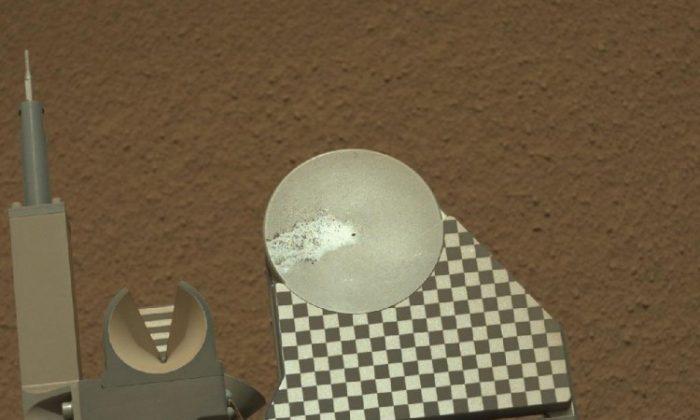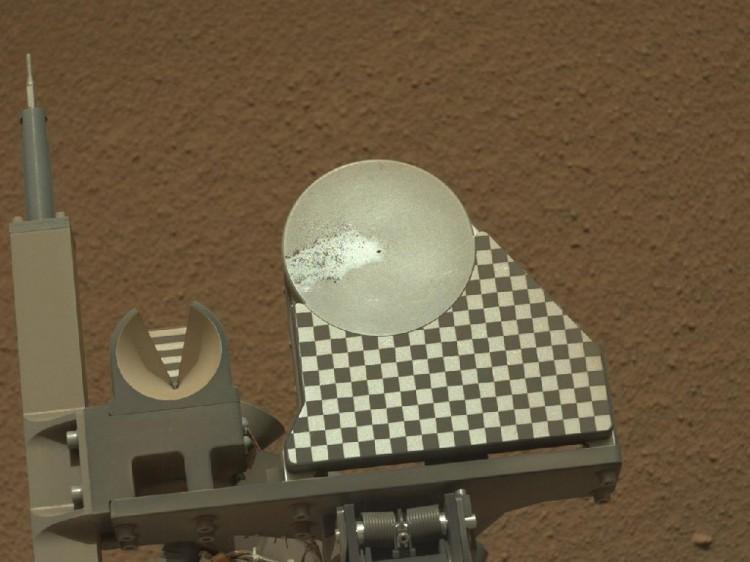NASA’s Curiosity “ingested its first solid sample” of soil on Mars for analysis, the U.S. space agency said Thursday.
Scientists working on the Curiosity project described the sample as a bright particle—around the size of a baby aspirin tablet—found on the surface of Mars.
NASA said the particle is not from the spacecraft, as previously occurred on Oct. 7, when it scooped up a piece of plastic. The rover also found more bright objects on Oct. 12.
“We are crossing a significant threshold for this mission by using [the Chemistry and Mineralogy instrument] on its first sample,” stated John Grotzinger of the California Institute of Technology in Pasadena, who doubles as Curiosity’s project scientist, in a press release.
“This instrument gives us a more definitive mineral-identifying method than ever before used on Mars: X-ray diffraction. Confidently identifying minerals is important because minerals record the environmental conditions under which they form,” he continued.
Curiosity has been situated in an area called Rocknest, and is tasked with sampling Mars’s soil with its instruments.
“We plan to learn more both about the spacecraft material and about the smaller, bright particles,” stated Curiosity Project Manager Richard Cook of NASA’s Jet Propulsion Laboratory in Pasedena in the release.
“We will finish determining whether the spacecraft material warrants concern during future operations. The native Mars particles become fodder for the mission’s scientific studies.”
When Curiosity found the plastic items last week, scientists were concerned that more shiny or bright objects found on the Red Planet might be the same.
“The science team started calling them schmutz,” Grotzinger said in a press conference on Thursday, according to Wired magazine. “We can’t rule out that they’re something man-made but we don’t think that they are.”
Over the next several weeks, the Curiosity team will use its so-called ChemCam to analyze the composition of the objects.
The Epoch Times publishes in 35 countries and in 19 languages. Subscribe to our e-newsletter.







Friends Read Free